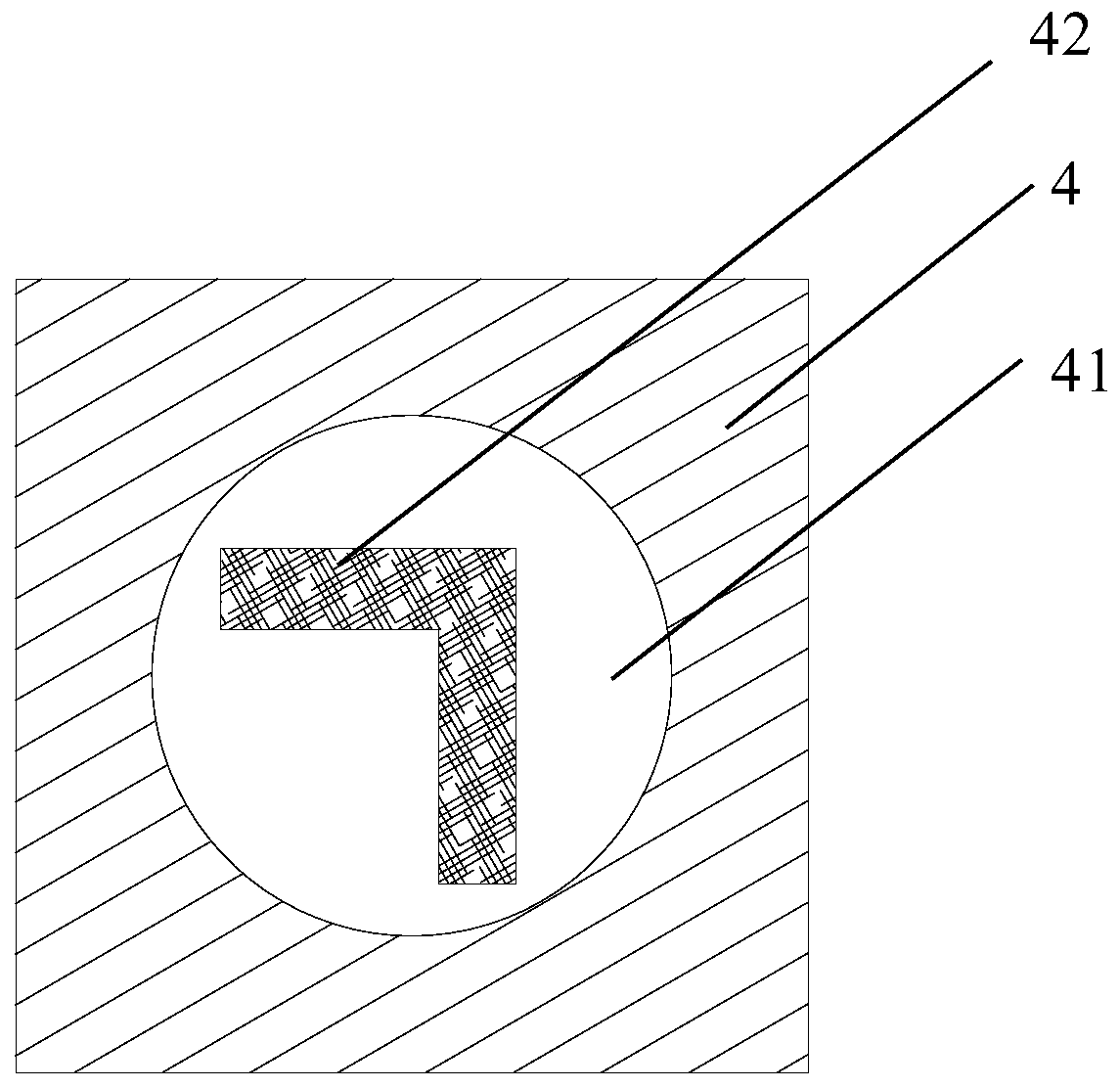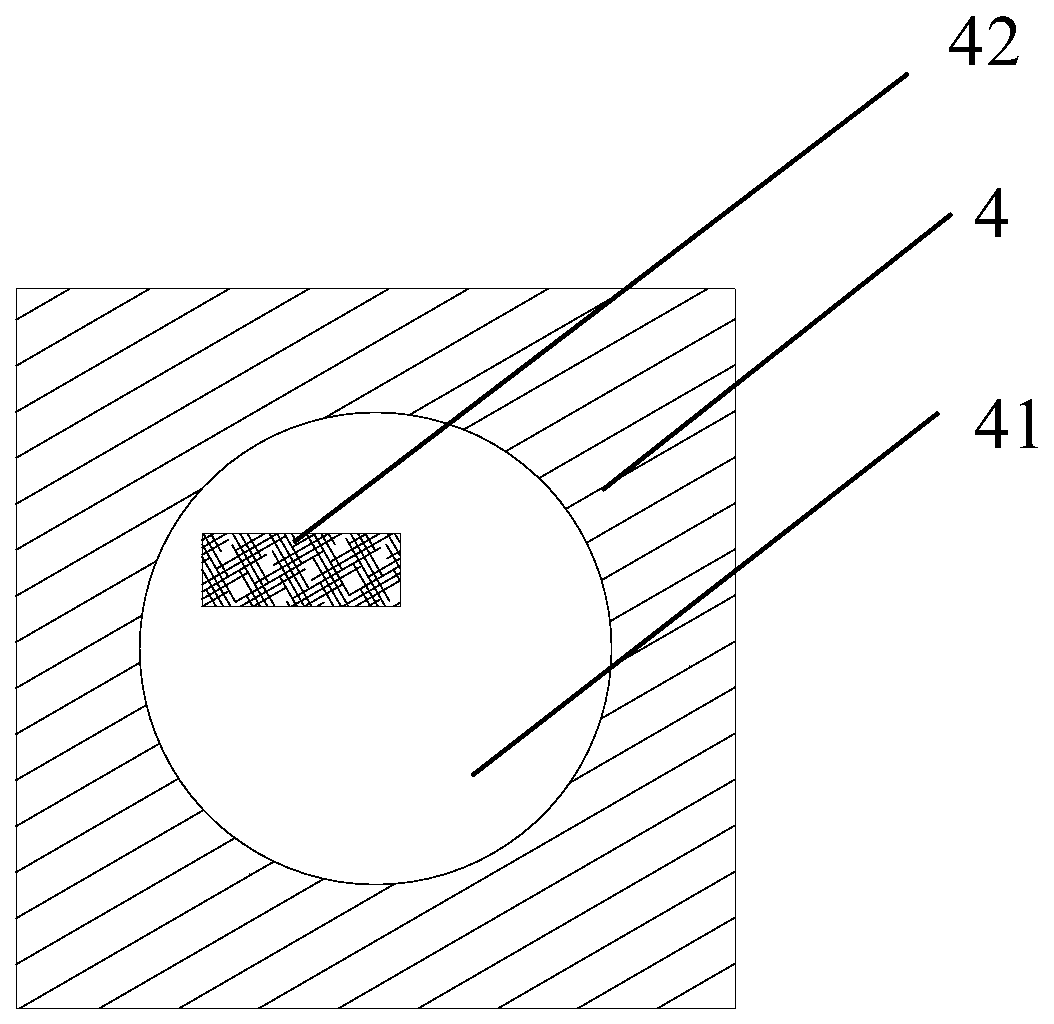Electrically-regulated optical chiral structure
A technology of chiral structure and electrical control, applied in the field of optical microstructure, can solve the problems of poor control precision and high cost, and achieve the effect of not easy to fall off, mechanically stable, and high-sensitivity control
- Summary
- Abstract
- Description
- Claims
- Application Information
AI Technical Summary
Problems solved by technology
Method used
Image
Examples
Embodiment 1
[0026] Such as figure 1 As shown, this embodiment discloses an electrically regulated optical chiral structure, which includes from bottom to top: substrate layer 1, conductive layer 2, electrostrictive layer 3, metal layer 4, substrate layer 1, conductive layer 2, The electrostrictive layer 3 and the metal layer 4 are connected to each other, the electrostrictive layer 3 is provided with not less than one first hole 31, the metal layer 4 is provided with not less than one second hole 41, and the first hole 31 A fixing block 32 is provided, and a metal block 42 is provided in the second hole 41 .
[0027] in particular:
[0028] The metal layer 4, the second hole 41 and the metal block 42 together form a chiral metal micro-nano structure. The first hole 31 is opposite to the second hole 41. The first hole 31 is arranged in a periodic array, and the second hole 41 is in a periodic array. Arranged in a periodic array, the periodic array is rectangular or square. The first hol...
Embodiment 2
[0035] On the basis of Example 1, such as figure 2 As shown, the second hole 41 is a circular metal hole array, and the metal block 42 is an L-shaped metal block 42 structure. The structure of the L-shaped metal block 42 breaks the structural symmetry of the circular hole, so that the overall structure has chirality. Under the excitation of circularly polarized light with different polarization states, the coupling between the L-shaped metal block 42 structure and the edge of the hole is different, that is to say, the surface plasmons on the metal layer 4 and the surface plasmons on the L-shaped metal block 42 structure are different. The meta-couplings are different, resulting in circular dichroism. In addition, the material of the L-shaped metal block 42 structure is specifically silicon material, that is, the L-shaped silicon material block structure. The silicon material has a high refractive index, and a strong electric field gathers between the silicon structure and t...
Embodiment 3
[0038] The center point of the metal block 42 does not coincide with the center point of the second hole 41 . The metal block 42 is made of noble metal material or silicon material.
[0039] On the basis of Embodiment 1, the second hole 41 is a square metal hole array, the metal block 42 is a strip-shaped metal block 42 structure, and the center of the strip-shaped metal block 42 structure is not located on the symmetry axis of the square metal hole array. The structure of the strip-shaped metal block 42 is different from the coupling of the edges of the holes in the square metal hole array, which destroys the symmetry of the surface plasmon resonance on the square metal hole array film, thereby generating circular dichroism.
[0040] Such as Figure 4 and Figure 5 It is a circular dichroism curve of a square metal hole array embedded with a strip-shaped metal block 42 structure. The period of the structure is 500nm; the side length of the square metal hole array is 400nm;...
PUM
| Property | Measurement | Unit |
|---|---|---|
| length | aaaaa | aaaaa |
Abstract
Description
Claims
Application Information
 Login to View More
Login to View More - R&D
- Intellectual Property
- Life Sciences
- Materials
- Tech Scout
- Unparalleled Data Quality
- Higher Quality Content
- 60% Fewer Hallucinations
Browse by: Latest US Patents, China's latest patents, Technical Efficacy Thesaurus, Application Domain, Technology Topic, Popular Technical Reports.
© 2025 PatSnap. All rights reserved.Legal|Privacy policy|Modern Slavery Act Transparency Statement|Sitemap|About US| Contact US: help@patsnap.com



